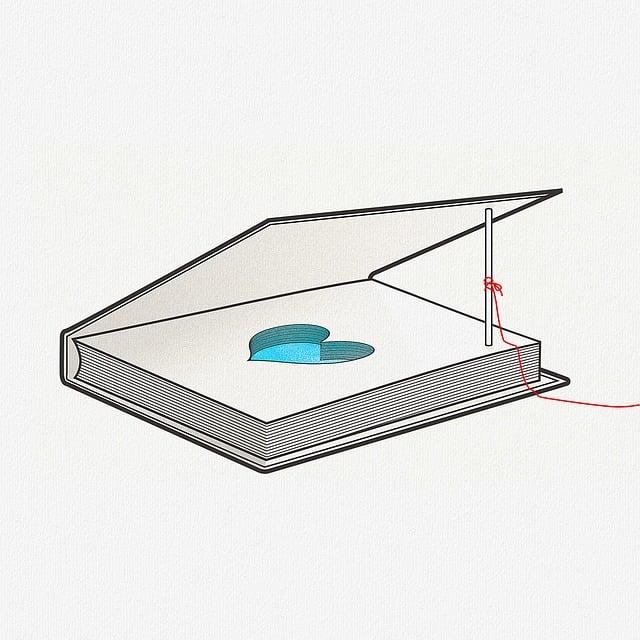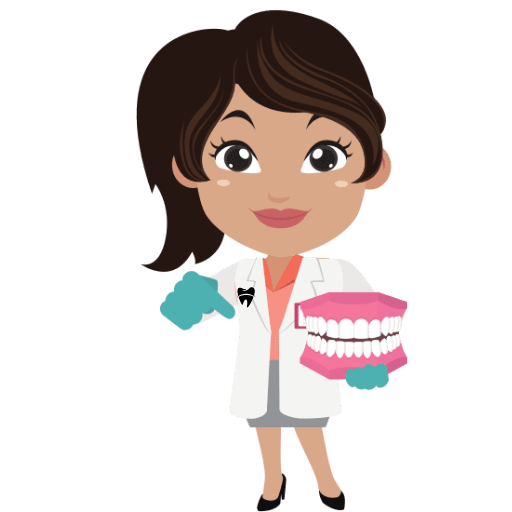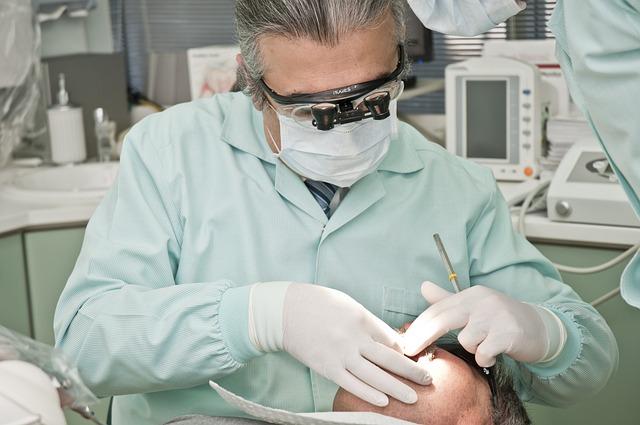Are you grinding your teeth without even realizing it? Bruxism splints may be the solution you need. Discover how they can protect your teeth!
1. Understanding Bruxism: Uncovering the Basics of Teeth Grinding
Bruxism, commonly known as teeth grinding, is a condition that affects millions of people worldwide. It is characterized by the involuntary and excessive clenching or grinding of the teeth, typically during sleep. Understanding bruxism is essential in order to effectively manage and treat this condition.
This section aims to uncover the basics of teeth grinding. Here are a few key points:
- Symptoms: Bruxism can manifest in several ways, including tooth sensitivity, jaw pain, headaches, and worn-down teeth. These symptoms may vary from person to person.
- Causes: While the exact cause of bruxism is not fully understood, it is often associated with stress, anxiety, and misaligned teeth. Other factors such as medications, alcohol, and tobacco use may also contribute to teeth grinding.
- Diagnosis: If you suspect you may have bruxism, it is crucial to seek a professional diagnosis. A dentist will examine your teeth and jaw, looking for signs of wear or damage, and discuss your symptoms with you.
- Complications: If left untreated, bruxism can lead to serious dental problems, such as tooth loss, fractured teeth, and temporomandibular joint (TMJ) disorder. It is vital to address this issue promptly to prevent further damage.
- Treatment: There are various treatment options available for bruxism, such as wearing a mouthguard while sleeping to protect the teeth and reduce grinding. Stress management techniques, orthodontic correction, and dental interventions may also be recommended, depending on the severity of the condition.
By familiarizing yourself with the basics of bruxism, you can take steps to manage and mitigate the impact of teeth grinding on your oral health. Remember, early intervention and seeking professional advice are crucial when dealing with this common dental concern.
2. The Impact of Bruxism: Exploring the Consequences of Teeth Grinding
Bruxism, or teeth grinding, is a common condition that affects people of all ages. This seemingly harmless habit can have a significant impact on both your dental health and overall well-being. Understanding the consequences of bruxism is important in order to seek appropriate treatment and minimize the potential damage.
1. Dental Consequences:
- Worn-down enamel: Bruxism can gradually erode the protective layer of enamel, exposing the underlying dentin and increasing the risk of tooth decay and sensitivity.
- Fractured teeth: The excessive forces generated during bruxism can cause teeth to crack, fracture, or even chip, often requiring expensive dental interventions such as crowns or implants.
- TMJ disorders: The repeated grinding and clenching motions can strain the temporomandibular joint (TMJ), leading to issues like jaw pain, headaches, and difficulty in opening or closing the mouth fully.
- Malocclusion: Bruxism can disrupt the natural alignment of teeth, resulting in a misaligned bite or malocclusion. This can lead to further discomfort and potential orthodontic treatment needs.
2. Physical and Emotional Consequences:
- Facial muscle tension: Bruxism involves intense muscle activity in the jaw, face, and neck, which can lead to muscle stiffness, pain, and headaches.
- Sleep disturbances: Teeth grinding often occurs during sleep, leading to frequent awakenings, restless nights, and disturbed sleep patterns.
- Stress and anxiety: Bruxism is known to be associated with stress and anxiety. Conversely, the grinding motion can also exacerbate these feelings, creating a vicious cycle of stress and bruxism.
- Impaired quality of life: Chronic bruxism can impact daily activities, social interactions, and overall quality of life due to the discomfort and consequences it causes.
Recognizing these consequences can help individuals acknowledge the importance of seeking professional help and adopting appropriate bruxism management techniques early on. It is vital to protect your dental health and overall well-being by addressing bruxism promptly.
3. Introducing Bruxism Splints: The Key to Protecting Your Teeth
Bruxism, commonly known as teeth grinding, can have harmful effects on your dental health. To protect your teeth from the damage caused by bruxism, using bruxism splints is essential. These dental devices act as a barrier between your upper and lower teeth, preventing them from grinding against each other and reducing the risk of fractures, chips, and enamel wear.
Bruxism splints are custom-made to fit your mouth perfectly. Made from durable materials, they are designed to withstand the forces exerted during teeth grinding without causing discomfort. By wearing a bruxism splint, you can avoid the long-term consequences of untreated bruxism, including tooth sensitivity, muscle pain, and temporomandibular joint disorder (TMJ).
Here are some key benefits of using bruxism splints:
1. Protection against tooth damage: Bruxism splints provide a cushioning effect, absorbing the pressure generated when you grind your teeth. This reduces the risk of dental problems such as fractures, cracks, and tooth wear.
2. Alleviation of jaw pain: Bruxism often leads to soreness and discomfort in the jaw muscles and joints. By wearing a splint, your jaw is properly aligned, relieving tension and minimizing pain.
3. Improved sleep quality: Teeth grinding can disrupt your sleep patterns, leading to restless nights and fatigue during the day. Bruxism splints provide a calming effect, allowing you to enjoy a restful night’s sleep.
Investing in bruxism splints is an effective way to protect your teeth from the damaging effects of teeth grinding. Consult with your dentist to determine if a bruxism splint is the right solution for you. Don’t let bruxism compromise your dental health – take action now to safeguard your smile!
4. How Bruxism Splints Work: Unveiling the Science Behind Teeth Grinding Prevention
Bruxism splints, also known as mouth guards, are an effective solution for preventing teeth grinding. These custom-made devices work by creating a protective barrier between the upper and lower teeth, absorbing the strong forces generated during grinding or clenching. Here’s why bruxism splints are so effective:
- Cushioning Effect: Bruxism splints are designed to cushion the teeth, reducing the impact of grinding and minimizing wear and tear on enamel. By absorbing the forces exerted when you clench or grind your teeth, they act as a shock absorber, protecting your teeth from damage.
- Alignment Control: These splints also help to align the jaw joints by guiding the lower jaw into a proper position. Proper alignment not only reduces the strain on the jaw muscles but also alleviates the symptoms associated with bruxism, such as jaw pain and headaches.
- Prevention of Tooth Damage: When left untreated, bruxism can lead to chipped teeth, fractures, and other dental problems. By providing a barrier between the upper and lower teeth, splints prevent them from grinding against each other, effectively safeguarding your teeth from potential damage.
Bruxism splints can significantly improve your quality of life by preventing teeth grinding and its associated issues. It’s important to consult with a dentist who can evaluate your condition and provide a personalized splint that fits your teeth perfectly, ensuring optimal comfort and protection. Remember, taking action against bruxism now can save you from potential dental problems in the future!
5. Benefits of Bruxism Splints: Safeguarding Your Oral Health
Bruxism splints, also known as night guards, are an effective solution for combating the damaging effects of teeth grinding and clenching. These custom-made oral appliances not only provide relief from the symptoms of bruxism but also play a crucial role in safeguarding your overall oral health. Here are some key benefits of using bruxism splints:
- Prevent tooth damage: One of the primary advantages of using bruxism splints is the protection they offer to your teeth. By creating a barrier between the upper and lower teeth, these splints help prevent wear and tear caused by grinding and clenching.
- Alleviate jaw discomfort: Bruxism often leads to jaw pain, headaches, and facial muscle tension. Wearing a splint while sleeping can help alleviate these discomforts by promoting muscle relaxation and reducing stress on the temporomandibular joint.
- Improve sleep quality: Bruxism can disrupt your sleep, resulting in fatigue and decreased productivity during the day. Bruxism splints help in minimizing disruptive grinding noises, allowing you and your partner to enjoy a peaceful night’s sleep.
Overall, bruxism splints provide a valuable solution to protect your teeth and alleviate the symptoms associated with teeth grinding and clenching. These custom-made appliances offer a comfortable and effective way to safeguard your oral health and improve your overall quality of life.
6. Choosing the Right Bruxism Splint: Factors to Consider for Effective Teeth Grinding Relief
When choosing a bruxism splint for effective teeth grinding relief, it is important to consider several factors. Here are some key points to help you make the right decision:
1. Material: Opt for a splint made of high-quality, durable material, such as hard acrylic or a dual-laminate composite. These materials provide excellent protection and longevity.
2. Customization: Look for a splint that can be easily adjusted and customized to fit your teeth and mouth shape accurately. This is crucial for optimal comfort and effectiveness.
3. Fit and Comfort: Choose a splint that is comfortable to wear and easy to insert and remove. It should fit snugly without causing any pain or discomfort, allowing you to use it consistently.
4. Breathability: A splint with sufficient air holes or vents promotes proper airflow and saliva circulation, preventing dry mouth and enhancing your overall comfort while wearing it.
5. Bite Alignment: Your bruxism splint should ensure proper bite alignment and reduce jaw muscle tension. This helps minimize the effects of teeth grinding and jaw clenching on your oral health.
6. Ease of Cleaning: Opt for a splint that is easy to clean and maintain. Ideally, it should be resistant to staining and odor buildup, ensuring good hygiene and longevity.
Considering these factors will ensure that you choose the right bruxism splint for effective relief from teeth grinding. Remember to consult your dentist or orthodontist for personalized advice based on your specific needs and condition.
7. Getting Started with Bruxism Splints: Step-by-Step Guide to Using and Maintaining Them
Using a bruxism splint can be a game-changer for anyone suffering from teeth grinding or jaw clenching. These custom-fitted oral appliances not only protect your teeth from damage but also help alleviate the symptoms associated with bruxism. To make the most out of your splint, follow this step-by-step guide for proper usage and maintenance:
- Step 1: Fitting the Splint
Start by carefully cleaning your mouth, ensuring your teeth and gums are free from any debris. Follow the manufacturer’s instructions to correctly fit your bruxism splint. This typically involves heating the splint in hot water for a specified time, then gently biting down and molding it to your teeth while applying gentle pressure. - Step 2: Wearing the Splint
When wearing the splint, make sure it fits comfortably and securely in your mouth. The splint should cover all upper or lower teeth and feel relatively snug but not too tight. Remember to remove the splint while eating, brushing your teeth, or participating in any physical activities. - Step 3: Cleaning and Maintenance
Proper maintenance of your bruxism splint is crucial for its longevity and your oral health. Rinse the splint with water after each use to remove any saliva or debris. Use a soft toothbrush and non-abrasive toothpaste to gently clean the splint at least once a day. Avoid using hot water or harsh chemicals as they may degrade the splint’s material.
By following these steps, you’ll ensure that your bruxism splint fits correctly, provides maximum protection, and lasts longer. If you have any concerns or feel discomfort while using the splint, consult your dentist for further guidance and adjustments. Remember, consistent usage and maintenance are key to effectively managing bruxism and promoting optimal oral health.
8. What to Expect: Managing and Alleviating Bruxism Symptoms with Splints
Splints can be a valuable tool for managing and alleviating the symptoms of bruxism, or teeth grinding. Here’s what you can expect when using splints as a treatment option:
– Customized Fit: A splint is typically custom-made to fit your mouth and teeth perfectly. This ensures maximum comfort and effectiveness in reducing the negative effects of bruxism.
– Protection: One of the main purposes of a splint is to protect your teeth from damage caused by grinding and clenching. By providing a barrier between your upper and lower teeth, a splint helps prevent wear and tear on the tooth enamel, reducing the risk of tooth fractures and chips.
– Muscle Relaxation: Splints work by promoting muscle relaxation in the jaw and face. By keeping the jaw in a slightly open position, the splint helps to relieve tension and strain on the muscles that control jaw movement. This can alleviate headaches, facial pain, and soreness often associated with bruxism.
– Improved Sleep Quality: Bruxism can disrupt your sleep patterns, leading to fatigue and daytime drowsiness. Wearing a splint during sleep can help you achieve a more restful night’s sleep, as it prevents teeth grinding and allows your muscles to relax.
– Long-Term Solution: When used consistently and in conjunction with other recommended treatments, splints can provide long-term relief from bruxism symptoms. Regular visits to your dentist ensure that the splint continues to fit comfortably and effectively.
In summary, splints offer a customized and protective solution for managing bruxism symptoms. They help relax the jaw muscles, protect teeth from damage, promote better sleep, and provide long-term relief. Consider speaking with your dentist to explore whether a splint is a suitable option for your specific needs.
9. Beyond the Splint: Additional Strategies to Combat Bruxism and Improve Overall Oral Wellness
If you suffer from bruxism, or teeth grinding, you know the discomfort it can cause. While splints are commonly used to alleviate symptoms, there are other strategies you can incorporate into your routine to combat bruxism and improve your overall oral wellness.
Here are some additional strategies to consider:
- Stress reduction techniques: Managing stress can significantly reduce teeth grinding. Incorporate stress reduction techniques, such as meditation or deep breathing exercises, into your daily routine to promote relaxation and minimize the urge to grind your teeth.
- Jaw exercises: Strengthening the muscles in your jaw can help alleviate bruxism. Perform gentle jaw exercises, like opening and closing your mouth slowly or moving your jaw from side to side, on a regular basis.
- Avoid caffeine and alcohol: Both caffeine and alcohol can intensify teeth grinding. Limit your consumption of these substances, especially before bedtime, to reduce the likelihood of bruxism.
- Good sleep hygiene: Establishing a consistent sleep schedule and creating a relaxing bedtime routine can improve the quality of your sleep and reduce bruxism episodes. Ensure your sleep environment is comfortable and free of distractions.
- Mouthguards: While splints are commonly used, a dentist may recommend a custom-fitted mouthguard to protect your teeth from grinding during sleep. These mouthguards offer added protection and cushioning to prevent further damage.
By incorporating these additional strategies into your routine, you can further combat bruxism and improve your overall oral wellness. Remember to consult with your dentist to find the right approach tailored to your specific needs.
10. Consulting a Dental Professional: Seeking Expert Advice for Long-Term Bruxism Management
When it comes to managing bruxism, seeking expert advice from a dental professional is crucial for long-term success. These specialists have the knowledge and experience to provide personalized guidance and recommend the most effective treatment options for your specific situation.
During a consultation, a dental professional will assess your oral health and symptoms associated with bruxism. They may conduct a thorough examination, which could include evaluating your teeth, jaws, and bite. This allows them to determine the underlying causes of your bruxism and develop a treatment plan tailored to your needs.
Consulting a dental professional also provides the opportunity to learn about various management strategies and lifestyle changes that can help alleviate bruxism symptoms. They may recommend:
- Wearing a custom-made mouthguard or splint to protect your teeth and jaw muscles during sleep or stressful situations.
- Exercises and techniques to relax the jaw and facial muscles, reducing the frequency and intensity of teeth grinding or clenching.
- Identifying and addressing any underlying stress or anxiety triggers that may contribute to bruxism.
- Educating yourself about proper oral hygiene practices and maintaining regular dental check-ups to monitor the condition and prevent any further damage.
By consulting a dental professional, you can gain valuable insights into managing bruxism effectively and improve your long-term oral health. Remember, their expertise and personalized advice play a vital role in helping you find relief from the symptoms of bruxism and maintain a healthy smile.
In conclusion, bruxism splints offer a reliable solution to protect your teeth and alleviate the symptoms of teeth grinding. By wearing these custom-made devices, you can safeguard your oral health and say goodbye to the discomfort associated with bruxism. Remember, consult with your dentist to find the best splint option tailored to your needs. Don’t let bruxism grind you down; guard your grind today.



